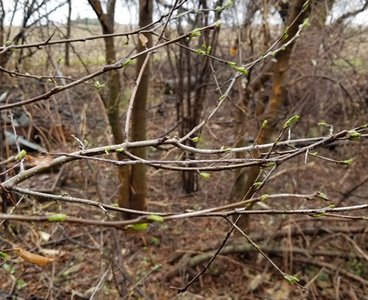Volume 24 Issue 2 | April 9, 2021
This newsletter and the advice herein are free. You usually get what you pay for.
Greetings,
The 2021 growing season is underway. Fortunately, everything is currently under control pest-wise and every cornfield still has 400-bushel potential.
Crop weather
Rainfall, air and soil temperatures, degree-days, soil moistures, and other current and historical weather data for the University of Minnesota Southwest Research and Outreach Center (SWROC), a little spot about two miles west of Lamberton, MN, can be found at SWROC Weather.
Kochia and wild buckwheat are emerging.
Much of the southern part of the state received some welcome rain. If dry conditions persist or become more intense, watch grasshopper populations in areas where they started to build last summer and expect two-spotted spider mite issues to return.
I am curious to see how some of the pests that do not overwinter here (e. g., armyworm, black cutworm, cereal aphids, and leafhoppers) survived the extreme cold snap in the southern plains.
Things to watch
Planting
Planting is upon us. I hope that we can get the opportunity to plant fields early, easy, and just time this spring. A few points to consider:
- Select the right hybrid or variety to manage any particular weed, insect and disease problems in each field.
- Try to plant into a good seedbed. Residue within a corn row is not helpful.
- Plant corn two inches deep. Shallow planted corn is high risk corn. Unless soils are dry, shallow up the depth for soybeans.
- Check your planting depth often and adjust for changing field conditions.
- Often, the best time to control weeds is before they emerge.
- Remember where you planted your hybrids and varieties. It makes a difference for weed, insect and disease management later on.
Corn
Corn rootworms
- In most of southern Minnesota, particularly where there was snow cover, both northern and western corn rootworms should have survived the winter well.
- Based on soil temperatures areas of West Central and Central Minnesota probably saw some mortality of western corn rootworm eggs during mid-February.
Black cutworms
The cooperative black cutworm reporting network is up and we picked up the first migrants on March 30. Weekly newsletters, and a revised PDF version of black cutworm facts can downloaded on the Black Cutworm Reporting Network web page. Let me know if the PDF format causes problems.
Soybean
Soybean aphid watch
Soybean aphid populations have generally tended to be low the past few years. In a little more than a month we should start to get an idea of what 2021 populations will be like. A few considerations until then:
- Buckthorn buds have started to open and overwintered soybean aphid egg hatch should be started. Aphids will go through several generations on buckthorn before a winged generation moves to soybean.
- A warm dry spring and early soybean planting will favor successful soybean colonization.
- In combination with the mostly mild winter weather, it is unlikely that temperatures were cold enough, long enough in the southern part of the state to greatly impact soybean aphid egg survival. Egg mortality was likely somewhat higher to the north.
Soybean gall midge
Two insecticides have recently received Section 2(ee) supplemental labels for in MN and several other states:
- Fortenza® (cyantraniliprole Group 28)) seed treatment, Syngenta®
- Thimet 20-G® (Phorate Group 1B), AMVAC®.
The supplemental labels need to be in hand when applying. Read the Thimet label closely for information on toxicity and herbicide interactions.
I have no personal experience with the efficacy of these products on soybean gall midge and they are presented for information purposes only.
Other soybean pests
- Two-spotted spider mite populations increased during 2020 with some fields needing treatment in drier areas of WC, C and EC MN. This is pest that needs watching particularly if dry conditions persist.
- Watch those areas in west Central Minnesota where bean leaf beetles were numerous in 2020. They have been low in most of the state and February cold may have reduced overwintering adult survival.
Alfalfa
Spring growth is well underway. It is time for stand/winter survival evaluations if that has not already been done. Pea aphids will the first insects show up with alfalfa weevil adults on tap.
Small grains
Planting is underway. It has been too windy and wet this week for effective sweep net sampling but will start to look for migrant cereal aphids and aster leafhopper early next week. We have added additional pheromone trap locations for armyworm in 2021.
Happy trails,

